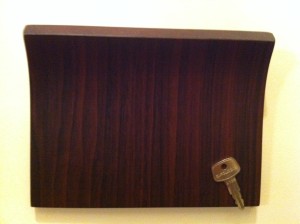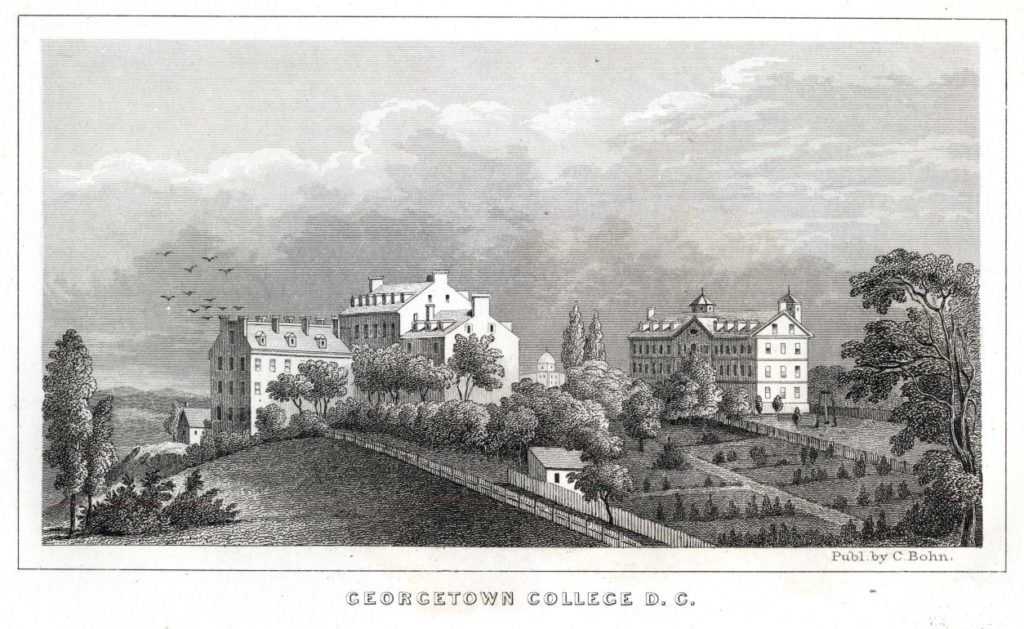Author: Evan
Pilgrimage Project
My favorite kind of research project is one that let’s me treat a course as a focused design studio, helps support and improve the surrounding environment (defined however you want organizational, ecological, economic, educational, etc.), and let’s me learn something worth sharing about how it all works together as model for getting things done. The Pilgrimage Project was one of those projects (the RainWorks Challenge was another).
Funded by a $25,000 grant from Georgetown’s Initiative on Technology-Enabled Learning (ITEL), the Pilgrimage Project involved four faculty from three departments, four library science and museum education professionals, 12 campus organizations, and 68 students across six courses. We worked together for over a year to produce original artworks, research, interactive installations and for one night converted Georgetown’s Old North building into a museum. It was a fascinating, challenging, and amazingly worthwhile endeavor that we will be are currently writing up for publication. In the meantime check out the Pilgrimage Project page for some details.
NASA-Satellite Servicing
My largest current research project is funded by NASA’s SSCO (Satellite Servicing Capabilities Office). The SSCO is working on creating tele-operated robotic satellites that are capable of repairing satellites currently in orbit. This is a hugely important endeavor. There are thousands of satellites in orbit right now and most of them were built with rapidly obsolescing technology. If we can repair these with new components, or even just refuel them, we can extend their useful lifetimes by many years. That’s a huge savings in both cost and time.
Our team is working on two fronts. First we are building and testing new interfaces for the ground team to use when “flying” the robots in orbit. We’re exploring simple widget designs based on games, sports, and other complex processes, but also looking at future technologies like AR and VR. This is a tremendously complicated process for what amounts to a stop at the gas station for the average car user. Space makes things complex.
This brings me to the second area of research. NASA has many decades of experience putting things into space, and part of that success is due to the organizational structure of a NASA mission. The SSCO is thinking a bit differently though. They are actively reimagining what it takes to service a satellite and thoroughly reinventing the context for our interface designs.
For decades in HCI research we have been studying context as a key element in successful interface design, but what does it mean to design in the face of a changing and undetermined use context? This is the central question we’ve been asking. Not surprisingly, the dynamics of scale are hugely important here. Understanding how the context is evolving requires comprehension at a completely different scale than what you need to understand in order to build the interface. While the sociotechnical dynamics at each scale are largely independent, there are still influences between them. Characterizing these influences and developing design strategies to deal with them is a huge opportunity to advance our understanding of multiscale design and I’m looking forward to sharing the results of our studies in the future.
IR Spotlight
I demoed this project as part of the ProCams session of CVPR back in 2006. That was a great event btw. At the time I was heavily into camera projector systems, and the two systems that I made, Public Space Invaders and this one, were really primitive versions of the Kinect and the Wii. So, technically I invented both of those 🙂 I thought this one was particularly nice because I have such a soft spot for IR. It’s like being able to control things by harnessing the energy from a different plane of existence. Anyway this video shows some of the ideas I had for using the system, but the one I really wanted to implement, and still might, uses a IR laser pointer for control of presentations. Of course, 6 years ago there were more uses for a system like that, than there probably are today. I haven’t thought about this in a while perhaps I should put that project on the resurrection list…
And now… please enjoy this video.
A Better Mousetrap (for keys)

I found this key holder in the container store. It had their usual 400% markup, but I bought it anyway because i thought it was a really clever design and i wanted to support whoever thought of it. Hopefully that person works for the container store. Anyway, its fine for what it is, a smallish rare earth magnet hidden behind a wood veneer. Unfortunately, I’m one of those people who has more keys than the janitor, so it was always a struggle to get them to stick. Plus, it was way out of scale on the wall where we hung it. So, I decided to improve upon this contraption.
Read More…
pixelvisions
There was an old camera called a Pixelvision that let you record video on an audiotape. It was awesome, no surprise, everything looks pixelated. Aaron Schain gave a great talk about it at the Best Ever Film Festival a few years back, but that’s another story. Anyway, this post isn’t about any of those things, I just liked the name.
Apparently, there is a street artist named Invader who puts life-size 8 bit mosaics of video game sprites all over the world. That guy is awesome. But I had no idea he did that when I started making my mosaics. So, sorry Invader, I never meant to rip you off, but when you spend 6+ years on a dissertation you need to do something that let’s you turn that part of the brain off and use other parts. That’s how this collection came about.
Read More…


 D5 Creation
D5 Creation